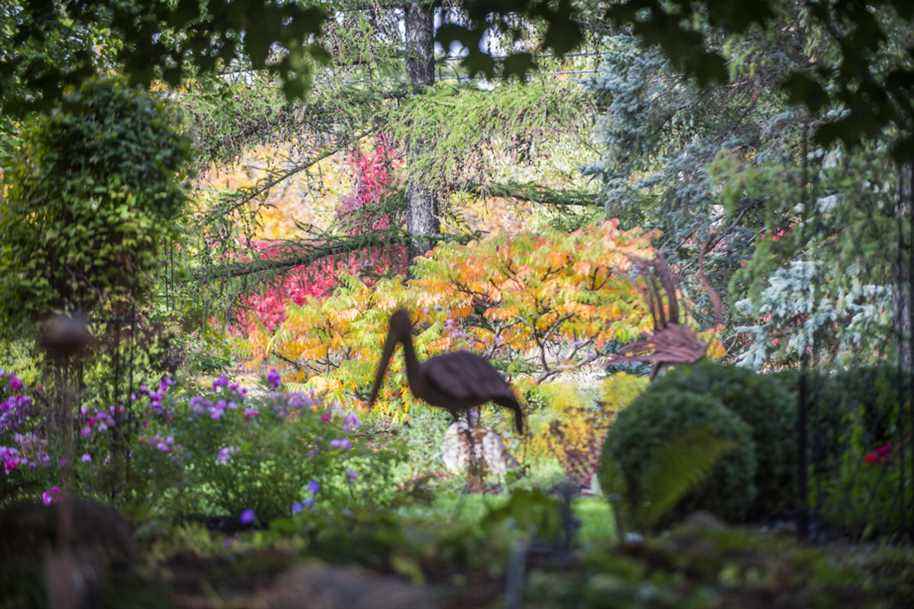Droughts and heat waves

PHOTO CATHERINE LEFEBVRE, SPECIAL COLLABORATION
The Katsura tree prefers moist soil and will benefit from good fall watering, especially in times of drought as is currently the case.
For many gardeners, both vegetable and flower bed enthusiasts, our beautiful summer was synonymous with watering. Imagine, in May, after a stingy winter of snow, according to data recorded in Saint-Hubert on the South Shore, 10.5 mm of rain fell while the average precipitation was 81 mm. In August, we are talking about 27 mm compared to a normal of 94 mm, not to mention the scorching heat: 25 days above 25 ° C, including 13 that exceeded 30 ° C. This deficit continued in September and has not stopped since. Stressed, some trees changed color earlier than expected and did not wait until October before starting their striptease autumnal. The impact of drought on trees is rather discreet: growth is slowed down, resulting in fewer spring buds and smaller leaves. The weakest will be more prone to disease and insect pests, which always know which to attack first. A good fall watering will do them a lot of good.
A shower of illusions

PHOTO CATHERINE LEFEBVRE, SPECIAL COLLABORATION
Transplanted two years ago, this young Tricolor beech will enjoy a few good showers during the fall. He will be even more fit in the spring.
Rain is often the bearer of illusions. A little downpour and it is believed that all the plants are full. At the beginning of October, during a house test carried out following 10.8 mm of rain that fell over a 24-hour period on the South Shore, we noted that, under a spruce tree, the soil was wet over 5 cm of depth only. It is often forgotten that some of the rain evaporates on the ground before reaching the roots and that, in the event of a thunderstorm, the precious liquid often ends up in the sewers due to the runoff, the ground not being able to absorb the water. water all at once. “The summer was exceptionally dry,” explains meteorologist Simon Legault of Environment Canada. And the spring snowmelt was particularly weak. This has been the trend for the past four or five years in Quebec. ”
Water, lots of water

PHOTO CATHERINE LEFEBVRE, SPECIAL COLLABORATION
It is recommended to use a dropper hose to water tree roots in the fall.
Young or mature, trees always appreciate a good water intake during the fall, especially this year. These waterings are even considered essential for conifers, as the metabolism of their needle-like leaves works even in winter. They must therefore build up water reserves. Pierre Paquette, of the Pépinière Abbotsford, in Saint-Paul-d’Abbotsford, near Granby, one of the largest producers of trees and shrubs in Quebec, indicates that for lack of good rain for a fortnight in a row In the fall, all its coniferous plantations are sprayed with 35 mm of water, a 12-hour operation in which water is drawn from ponds. Marie-Ève Diotte, owner of Jardin2m, in Deux-Montagnes, a major retailer of ornamental trees, explains that people tend not to maintain their trees sufficiently. “We always recommend that our customers water their trees before winter, especially if the transplant is recent. And this summer, I never imagined having to water my two big red oaks that have been growing on my land for years! ”
Good fertilization

PHOTO CATHERINE LEFEBVRE, SPECIAL COLLABORATION
The hose should be placed in the shade of large branches, and beyond, where most of the rootlets are.
Agronomist Claude Gélinas has been recommending fall watering for years, even for hardwoods that have already lost their leaves. An intervention that is all the more necessary for young trees, those who experience difficulties or are unstable for lack of an adequate root mass. He suggests using a hose that dispenses the water drop by drop, under the entire surface in the shade of large branches and even up to 60 cm beyond, to water the soil to a depth of 10 to 15 cm, where most of the rootlets are. Almost invisible (they are at most 1 mm in diameter), they number in the millions and represent around 90% of the total length of the root system. “Even if the tree is in slow motion, the rootlets are partially renewed in the fall. They are the ones that absorb water and mineral salts, ”he explains. Mr. Gélinas also recommends fertilizing trees before winter. He is not the only one. “This is not a marketing strategy for garden centers,” assures Marie-Eve Diotte. In the forest, the litter made up of dead leaves nourishes the trees. On our very clean urban land, good fertilization is essential. ”
Consult the Abbotsford Nursery site Consult the Jardin2m site Consult the agronomist Claude Gélinas site

